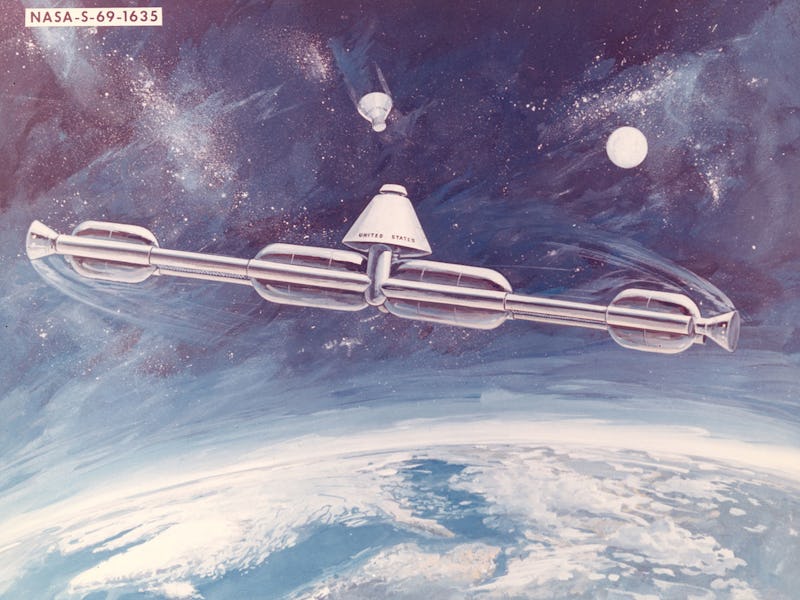Science Fictional Artificial Gravity Won't Work; Let's Talk G-Forces
The future of space travel is going to be nauseating to look at.

Gravity is tough. It took Newton a long time to crack it and a lot of Newtonian physicists a hundred years to confirm Einstein’s gravitational theories. And that’s the naturally occurring stuff. Artificial gravity is a good deal more confusing.
Mining sci-fi — which is surprisingly fruitful for futuristic problem solving — is hopeless here. Consider Star Wars lore, which stuck a grubby finger into every midichlorian-sized hole it could. The artificial gravity on the Millennium Falcon and every other hunk of space junk? It’s generated by an artificial gravity generator. Wookieepedia, which has ten thousand gnarly words on Darth Maul, has all of two sentences on Lucas logic defeating zero-g:
Artificial gravity generators were used to create a stable field of gravity outside of a planet’s natural gravity well, thus aiding life in space. They were also used to compress objects—for storage purposes with gaseous commodities, and sometimes to create synthetic gems.
Even Star Trek, which is supposed to be Star Wars for the Model U.N. kids, isn’t better. But it’s not really fair to pick on science fiction. Synthetic gravity, as in gravity created by humans, is currently beyond our comprehension.
The Problem
The problem is that, compared with the other forces, gravity is weak — piddly magnets can defeat it. What that means in practice is that, the easiest way to build a spaceship with artificial gravity equal to terrestrial gravity would be to give it the mass of Earth. Barring some strange super-dense nonsense material or unreplicable study suddenly getting replicated, that’s out of the question.
That doesn’t mean, however, there aren’t more complicated solutions. The artificial imposition of normal gravity just isn’t going to be one of them.
The Probable Solution
If you accelerate just the right amount — either in a line or a circle — you can create g-forces equal to that of gravity. The problem with accelerating in one direction is that your fuel will eventually be depleted. Fortunately, space is a vacuum, so once rotational acceleration does its work, there’s nothing to slow a space station’s roll. You’ve seen this on screens in Elysium, The Martian, and Halo — and it permeates weirder NASA concepts. (It’s not only old concepts like the 1969 art above — spinning spaceships are on NASA’s 2015 roadmap for the future.)
Interstellar, rolling in the deep (space).
Like all forces, the concept boils down to mass times acceleration. In this case, the circular acceleration is ω^2 times R (where ω is angular velocity and R is the radius of the ship). Because mass stays the same wherever you are, creating the right fake gravity equivalent becomes an exercise in making your ship the right size and spinning it at the right speed.
The Problem With the Probably Solution
But building Goldilocks’ spinning ship ain’t easy. If the radius is too small, you bump up against the Coriolis effect. When your internal frame rotates rapidly, simple actions take on weird properties. You might feel comfortable Earth-like g-forces standing still, but even tilting your head could throw your two inner ears out of sync. It’s why you can’t throw a basketball straight across a carousel, points out PBS’ YouTube series Space Time:
If you make the ship big enough, you don’t have to spin it so fast — but you get incredible mechanical stresses on your spacecraft if you make it huge. The sci-fi sweet spot, PBS Space Time says, is close to Halo’s ring. Considering that it’s tens of thousands of dollars per pound to get materials off-planet, “astronomical,” as a Cornell University astronomer put it, we’d have to build the thing in space. Given a sufficiently large Kickstarter, you could make that zero-g into the single digits.